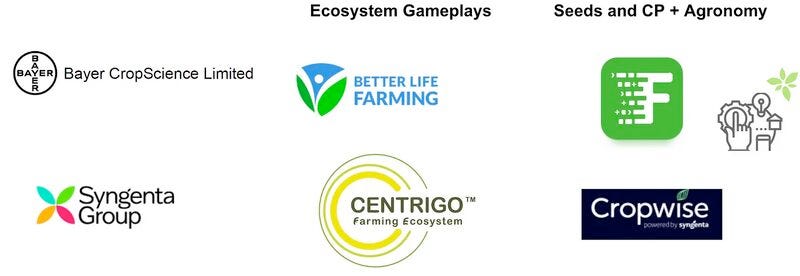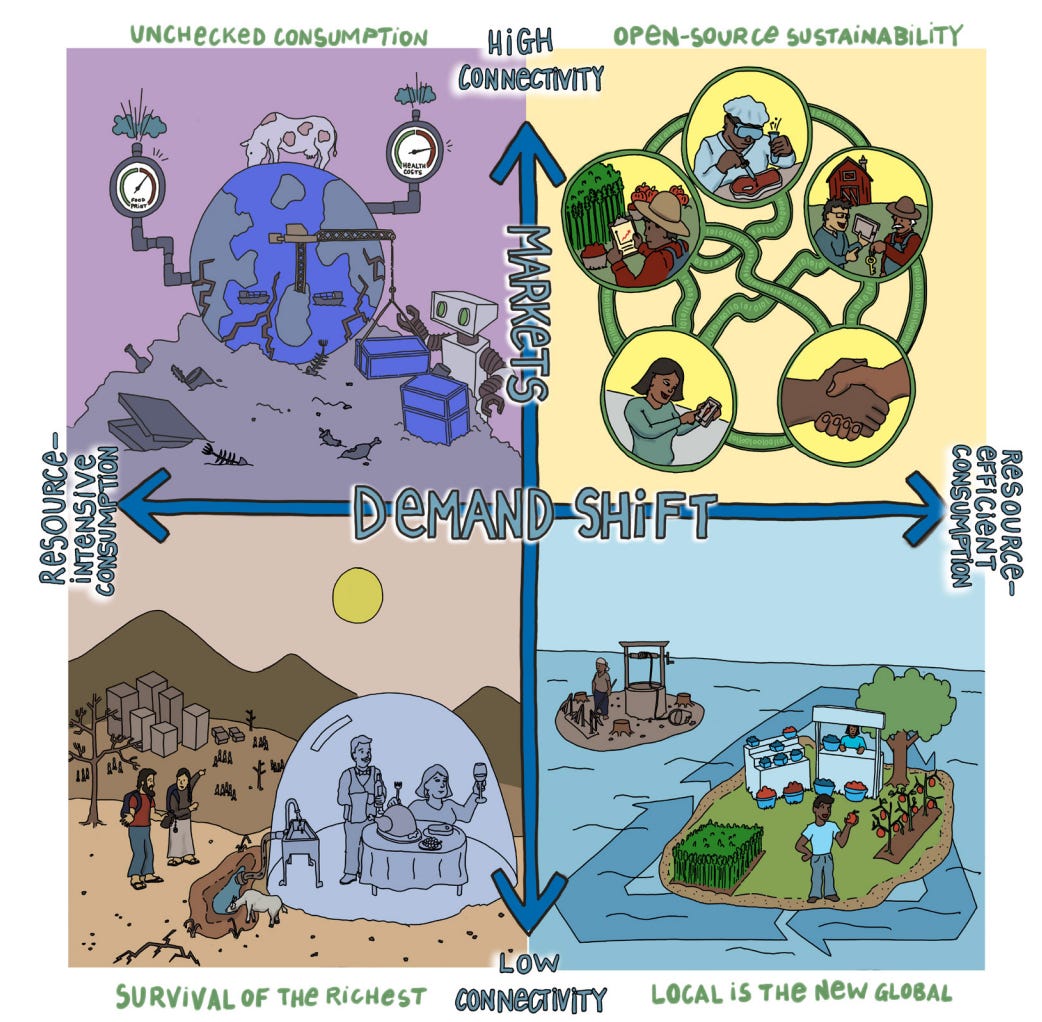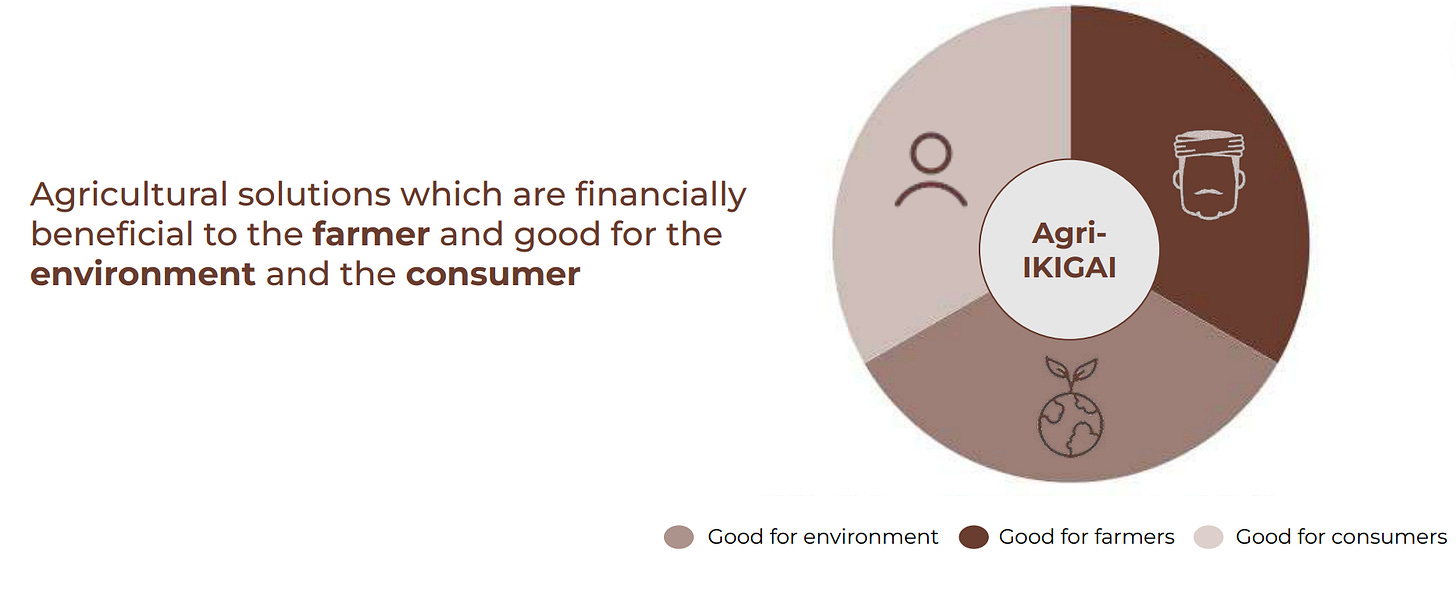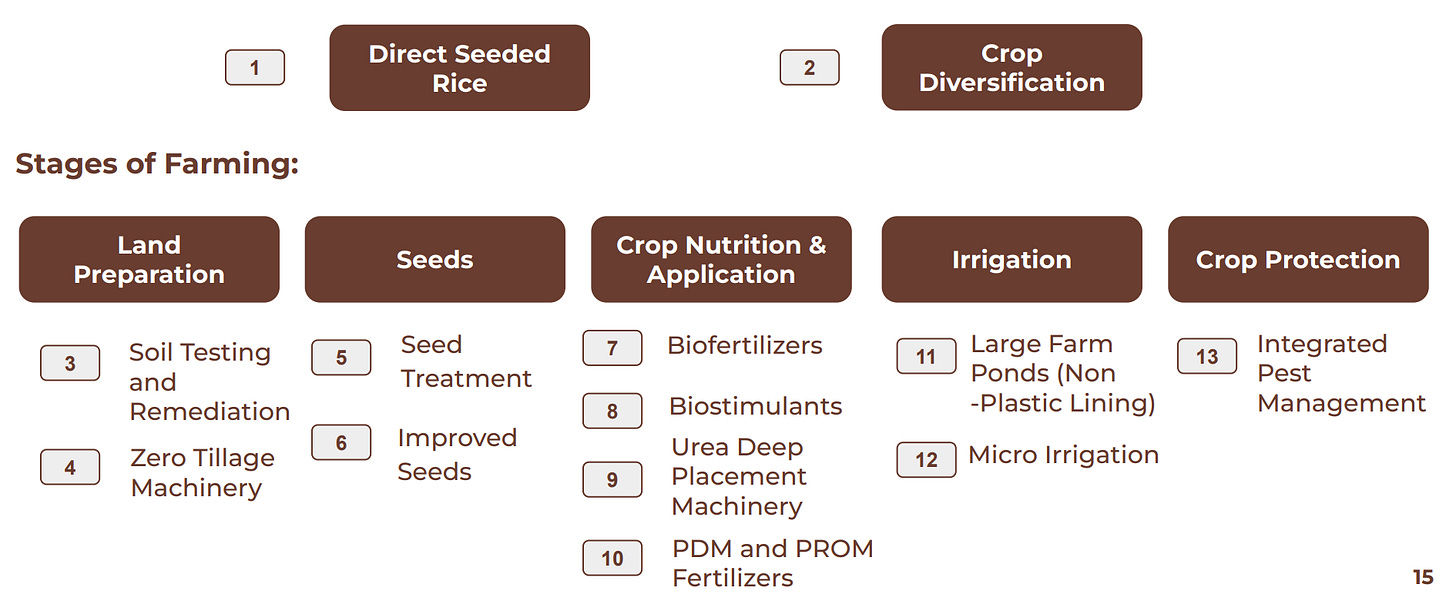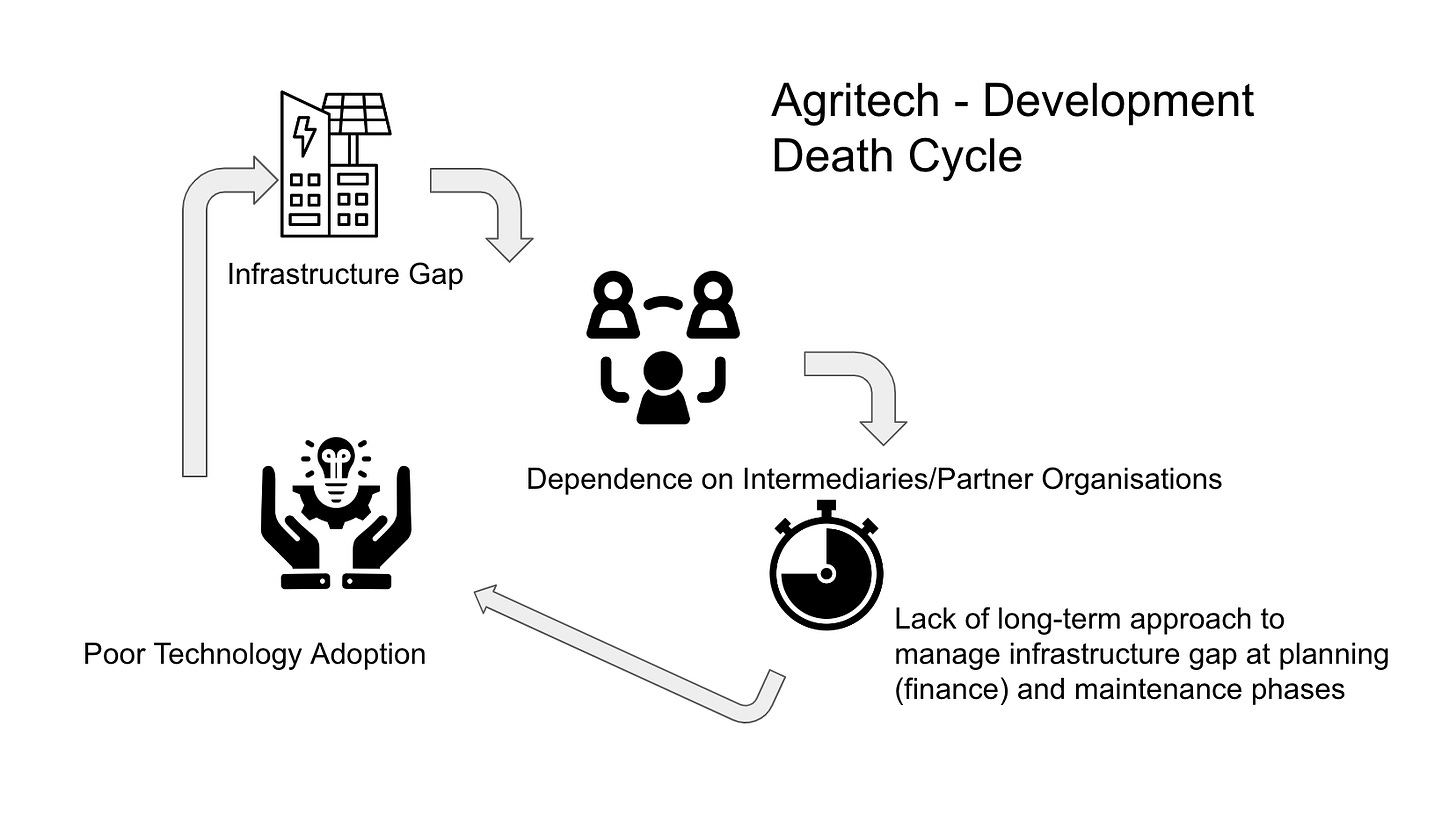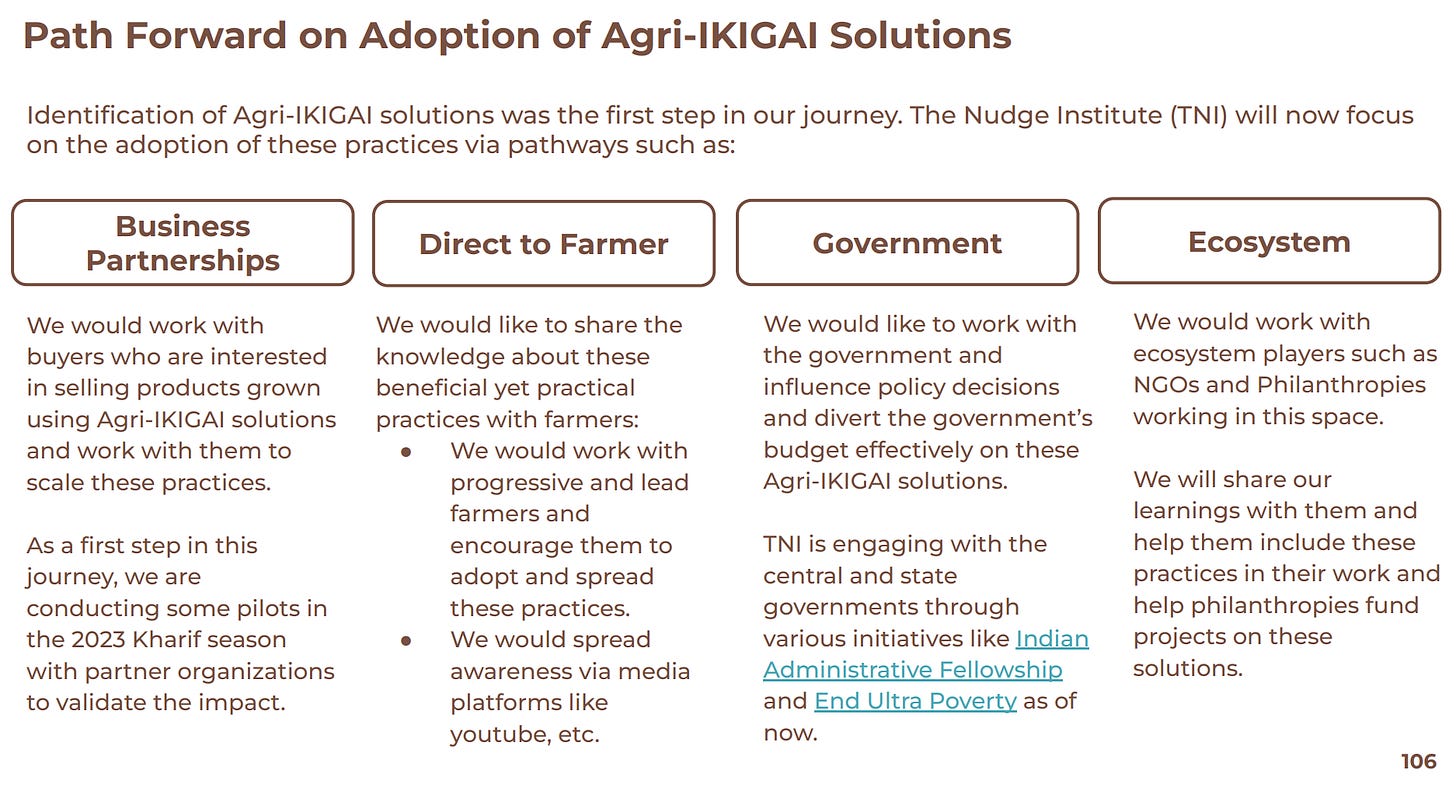Saturday Sprouting Reads (Middlemen Collectives, Chinese Geopolitical Hunger Games, Agri-Ikigai)

Dear Friends,
Greetings from Hyderabad, India! Welcome to Saturday Sprouting Reads!
About Sprouting Reads
If you've ever grown food in your kitchen garden like me, sooner than later, you would realize the importance of letting seeds germinate. As much as I would like to include sprouting as an essential process for the raw foods that my body loves to experiment with, I am keen to see how this mindful practice could be adapted to the food that my mind consumes.
You see, comprehension is as much biological as digestion is.
And so, once in a while, I want to look at a bunch of articles or reports closely and chew over them. I may or may not have a long-form narrative take on it, but I want to meditate slowly on them so that those among you who are deeply thinking about agriculture can ruminate on them as slowly as wise cows do. Who knows? Perhaps, you may end up seeing them differently.
Members-Only Programming Note: Next Townhall 25th September - ‘The Economies of Scale’ Agritech Myth with Ajay TG: RSVP details are here
Programming FOMO Note: 3 more days left for the Ides of September deal to expire.
{Subscriber-Only}: Middlemen Collectives (courtesy Bayer vs Syngenta)
Bayer and Syngenta are pursuing the collectivisation of farmers in smallholding contexts through divergent means. Why is collectivisation important?
The clearest articulation came in a recent interview with D Narain, shortly before he handed over the leadership baton to Simon Wiebusch.
"Today, the farmers’ requirements are evolving drastically. They no longer want us to simply sell their products and depart. They want to learn about agronomy and wish to discuss about solutions for market connections and financing. These represent substantial shifts”
How has Bayer fared in their focus towards smallholders through their Better Life farming program? How to understand the collectivization approaches of Bayer and Syngenta? And what does it tell us about the evolution of middlemen?
In a recent subscriber-only edition, I look at middlemen collectives, Satsure’s Series-A fundraise and Fyllo’s positioning gameplay
{Subscriber-Only}: Chinese Geopolitical Hunger Games
These are hard times for China.
China is rapidly falling out in investor sentiment and when I look at their geopolitical hunger games, it brings forth a discomforting question: Is Chinese paranoia about food security stemming from its wartime planning? Or from shifting rural demographics?
The more I study agritech and its future in a deglobalizing world, agribusiness gameplays are starting to look like geopolitical manoeuvres.
Let’s take the case of China.
Why is a country with 17.72% of the world’s population hoarding 70% of the world’s grains’? Why did China not open up their grain reserves for domestic consumption even during Peak Covid?
Although wartime planning may rightfully encourage hoarding behaviours, the domestic scene is equally shifting grounds. Thanks to its economic growth, meat and dairy consumption is on the rise while grain consumption is going south.

In a recent subscriber-only edition, I look at Chinese geopolitical hunger games and their ramifications for China’s food security.
Unpacking Agri-Ikigai (生き甲斐, lit. 'a reason for being')
If you are working in food and agriculture, there has never been a more challenging time to stay motivated at work.
As I dig into data that keeps me abreast with Climate change, Food Geopolitics and technological developments, writing Agribusiness Matters for Agritech Founders and Investors often feels like walking over an oiled tightrope, feeling eternally conflicted between bias-for-action optimism and big-picture realism.
It's easy to slip towards one end which focuses purely on the optimism offered by technological developments - drones, carbon credits, satellite imagery, biologicals, gene-edited crops and whatnot.
Analyzing emerging technological developments in any domain fundamentally requires you to be aware of Amara's Law:” Most people overestimate what they can achieve in a year and underestimate what they can achieve in ten years.”
Which parts of the agritech revolution have been overestimated and which ones are terribly underestimated?
It's equally easy to slip towards the other end, filled with doom and despair when you do ground-truthing and discover experts on Climate Change and agriculture who have dismissed all our childish endeavours to make our food systems better as frivolous distractions that prevent us from seeing how fragile our food systems are in the wake of Climate Change.
How do you discover the parts of the food and agriculture system where optimism could be discovered without burying your head in the sand of ground realities?
How feasible are our collective chances to design better food systems by 2030? An interesting, although a bit bland (more importantly context-blind) 2017 report from WEF presented four possibilities.
“1. Survival of the Richest: In a world of resource-intensive consumption and disconnected markets, there is a sluggish global economy and a stark division between the “haves” and “have-nots”.
2. Unchecked Consumption: With strong market connectivity and resource-intensive consumption, this is a world of high GDP growth with high environmental cost.
3. Open-source Sustainability: A future linking highly connected markets and resource-efficient consumption has increased international cooperation and innovation, but may leave some behind.
4. Local Is the New Global: In a world of fragmented local markets with resource-efficient consumption, resource-rich countries focus on local foods, whereas import-dependent regions become hunger hotspots.”
With the hindsight of 2023, we are now seeing geopolitical winds play out scenarios 1 &4 in Africa, 2 & 4 in the US and 3 and 4 playing out in G20 countries, especially in light of the recent Delhi Declaration. (with DPI/DPG being the connective glue possibility, especially for the Global South)
In these uncertain, deglobalizing times, a new report from the Nudge Institute lists 13 agricultural solutions for smallholder farmers under the popular pop-motivational rhetoric: Ikigai
This is a great start to list down fairly non-controversial agricultural solutions with clear adoption pathways for collaborative philanthropy experiments to improve the lives of smallholder farmers.
While the report is heavily focused on solutions with a bias for action, the report doesn’t delve into the complexity of the smallholder context to unpack the challenges involved in adopting these solutions. How can these solutions be adopted across a wide variety of smallholder farmers? As much the report delved into the ‘supply’ solutions side, I wish it had equally delved into the ‘demand side’.
Why should farmers alone take responsibility for providing solutions that are good for the environment and consumers? Let’s get real. Unless these solutions are sponsored by an external development organisation/NGO/government, there are no clear incentives for farmers and other supply chain players to invest in these solutions and move beyond the ‘cheap food’ paradigm.
How do we ensure that these 13 Agri-Ikigai solutions don’t get trapped by the Agritech-Development Death cycle?
When you are trying to improve the adoption of agritech in smallholding contexts, you are bound to discover an underlying Infrastructure gap, which results in more dependence on intermediaries, which further incapacitates long-term approaches to infrastructure creation and maintenance thereby fueling this vicious trap forward.
Although the report identifies four adoption pathways, I hope in subsequent editions, it delves deeper into the demand side and incentives that are needed to scale these Agri-Ikigai solutions.
So, what do you think?
How happy are you with today’s edition? I would love to get your candid feedback. Your feedback will be anonymous. Two questions. 1 Minute. Thanks.🙏
💗 If you like “Agribusiness Matters”, please click on Like at the bottom and share it with your friend.



